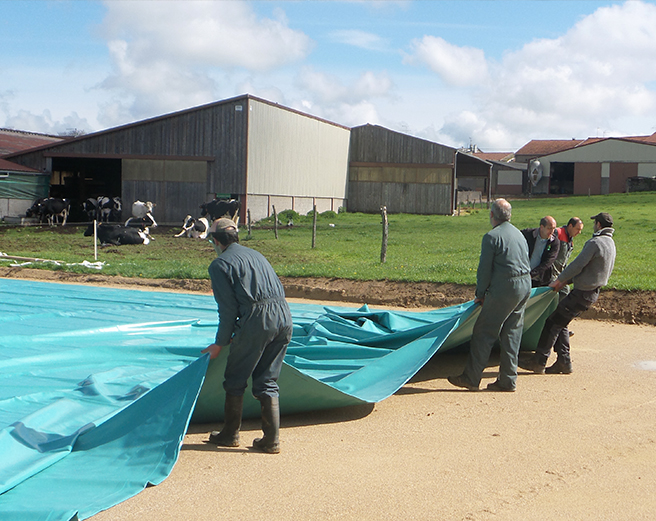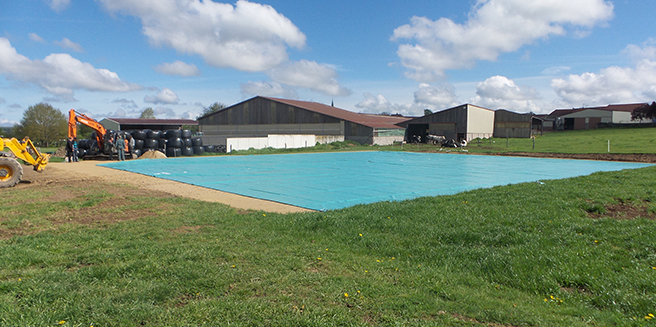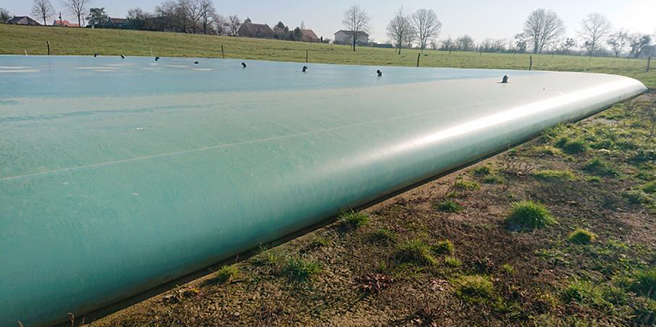The regulation on bovine effluents application time is becoming increasingly strict each year. This, indeed, narrows down the farmers’ possibilities. Increasing the agricultural effluent storage becomes then a real necessity. That was the case for the GAEC de la Tour farm.
Restrictions
GAEC de la Tour farm, located in the Vosges, needed to increase its bovine effluent storage capacity. Its concrete pit was indeed becoming too small further to the increase of its cattle. Moreover, long-term storage with this system was not possible any longer after standards alignment.
Therefore, the new appropriate storage solution should:
- include total capacity storage of 1200 m3,
- include inlet/outlet located under the tank, so as to keep pipes and hoses underground.

The solution: the flexible tank for agricultural effluent storage
Together with its partner CAL (The Lorraine Agricultural Cooperative), Pronal supplied a flexible tank for agricultural effluent storage. This 1200m3 tank is made out of:
- high strength fabric coated with PVC suitable for effluent storage, assembled by high-frequency welding,
- one inlet and one outlet located under the tank,
- one overflow,
- six vents,
- and 4 reinforcement corner plates.
Liquid effluents are stored in the flexible tank after treatment with a phase separator. This large capacity enables long-term storage of effluents before the application period. Then, the farmer will empty the tank with a foot pump. He will then spread his fertilizer without leaving his tractor.
Advantages of this solution of agricultural effluents storage:
- strong reduction of odors,
- a genuinely usable volume (no rainwater),
- a high fertilizer quality (application of fertilizer and not water),
- time saving thanks to quick installation,
- and unbeatable value for money.


Conclusion
In conclusion, the Pronal flexible tank met all expectations. Thanks to the size of this storage unit, the farmer will be able to forecast a cattle increase or a new standard alignment. This solution is a low-cost investment and is money-saving compared to a concrete pit or manure pit. His fertilizer will be and will remain clean, as never diluted with rainwater.
NB: Why not a concrete pit or a manure pit? The answer is easy: the concrete pit requests workforce, time, various machines for its installation, which means a substantial budget. Moreover, new regulations request the pit to be covered to limit odors. On top of all this, rainwater can fall in the pit and potentially dilute the fertilizer stored. This gives finally the lowest quality fertilizer to spray on the fields.
Intervenants
Nos autres projets
Vous souhaitez plus d'informations sur ce projet ?
Vous pouvez contacter nos experts qui sont adeptes de ce genre de projet pour avoir plus d’informations et être conseillé